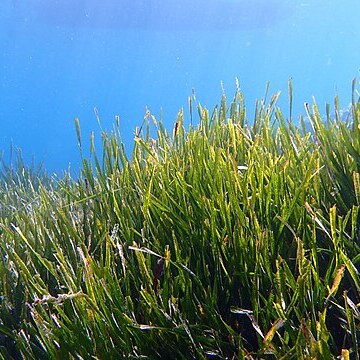Herbs perennial, submerged, marine, with creeping rhizome and short, erect stems. Rhizomes and stems with dense, persistent, fibrous leaf bases. Leaves basal, alternate, sheathed at base; sheaths convolute, auriculate at base, apex ligulate. Inflorescence of 1 or more aggregated spikes on elongated peduncle, subtended by reduced leaves (leaflike bracts). Flowers bisexual or uppermost with a reduced gynoecium. Perianth absent or of 3 caducous scales. Stamens 3; anthers sessile, extrorse, with a thick connective, opening by longitudinal slits. Carpel 1; ovule 1, elongated. Fruit fleshy, indehiscent. Seeds without endosperm; embryo straight.

